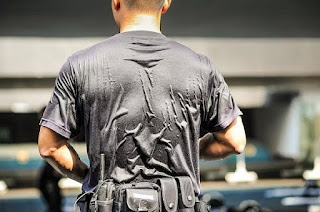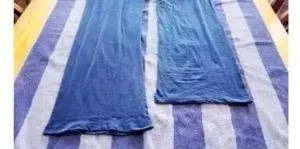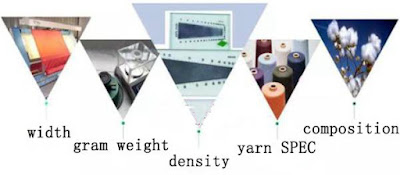The Truth about Moisture Wicking Fabric: Water Vapour Permeability and Liquid Moisture Management Properties
Sweating is a necessary physiological function that helps your body cool down before you get too hot. However, sweat stains on your clothes are unsightly, can embarrass you and, moreover, can make you feel hot, humid, and uncomfortable. If you like to exercise, then moisture wicking clothes are your first choice.
The way and process of moisture wicking of clothes
Clothes with moisture wicking so that they don’t get soaked with sweat. In order to improve the moisture comfort of your clothes, it is important to first understand the process of sweat passing through the fabric. In general, the process of transferring perspiration through a fabric consists of 3 steps: moisture absorption, spreading and quick drying.
| moisture absorption | The first step of the wicking and quick-drying function is the wetting of the surface of fibre and fabric with perspiration. |
| spreading | The water absorbed by the fabric is diffused from the inner surface of the fabric to the outer surface, as well as the gradual expansion of the fabric’s moisture absorption area. |
| quick drying | The evaporation process of the water on the surface of the fabric, the water absorbed by the fabric evaporates into outer space and the fabric becomes dry. |
In this process, sweat passes from the inner surface of the garment to the outer surface in both the liquid and vapour phases.
1 Water transmission in the vapour phase – water vapour transmission
The water vapour permeability of the fabric is generally expressed in terms of the amount of water vapour per unit time per unit area (mg/cm2·h) under the condition that a certain relative humidity difference exists between the two sides of the fabric.
Under a humidity gradient, water vapour diffuses from the high humidity air through the fabric to the low humidity air. The movement of water vapour, depending on the porous properties of the textile material and the structural voids within the fabric, this porosity and voids are interconnected into channels that can transmit water vapour to escape from the surface of the fabric.
2 Liquid phase transfer of water – transfer of liquid water
When liquid water meets the fabric, the fibers in the fabric undergo water absorption. Different fibre, different water absorption. For example, hydrophilic fibres, as containing more hydrophilic groups, the greater their ability to absorb water, and hydrophobic fibres, on the contrary, poor water absorption. This water-absorbing effect of fibres is generally known as liquid moisture management properties.
Factors affecting moisture wicking of the garment fabric
| fibre properties | Natural and man-made fibers that absorb moisture well, the fabric have good water vapour permeability. Synthetic fibres are all less hygroscopic and some hardly absorb any moisture. |
| yarn structure | When the yarn twist is low, fabrics that with with a loose structure and good moisture absorption fiber, which are distributed in the outer layer of the yarn have good water vapour permeability. |
| fabric structure | The water vapour permeability of a fabric depends mainly on the thickness and tightness of the fabric. For most fabrics: the thickness increases, the tightness increases, the more interweaving points, the worse the water vapour permeability. |
| fabric Finishing | The moisture permeability of a fabric decreases after a resin finish. The water vapour permeability of fabrics coated with a moisture-absorbing layer is significantly improved. |
Test evaluation of moisture wicking in clothing: water vapour permeability and liquid moisture management properties of fabric
1 test and evaluation of water vapour permeability of fabric
In the Desiccant Method, the test specimen is sealed to the open mouth of a test dish containing a desiccant, and the assembly placed in a controlled atmosphere. Periodic weighings determine the rate of water vapor movement through the specimen into the desiccant.
In the Water Method, the dish contains distilled water, and the weighings determine the rate of vapor movement through the specimen from the water to the controlled atmosphere. The vapor pressure difference is nominally the same in both methods in the variation, with extremes of humidity on opposite sides.
The water vapour permeability test is divided into four steps
1 Prepare the combination (specimen, medium, test dish).
2 Place the combination in the selected temperature and humidity conditions for equilibrium and weigh M1 after the equilibrium time has been reached.
3 Place the initial weighed sample back into the selected temperature and humidity environment and weigh M2 after the required time for testing has been reached.
4 Record and report the average results of the three test samples.
Water vapour permeability testers can be used in a variety of ways to effectively test the water vapour permeability of the fabric, providing a strong basis for fabric comfort. If sweat vapour can pass through the clothing, people will not feel the presence of moisture, but if the clothing severely hinders the passage of water vapour, the water vapour inside the clothing will accumulate to a certain level and condense into water, people will feel uncomfortable.
2 test and evaluation of liquid moisture management properties of fabric
Referring to test standard: AATCC 196, place the garment specimen in the liquid moisture management tester with the skin contact side upwards and pour a quantity of saline onto the centre of the skin contact side of the fabric to simulate the process of eliminating sweat from the body.
Hold the specimen horizontally between the inductors using a fixed pressure, then deliver a standard test solution to the surface of the specimen for testing. A computer dynamically records the change in resistance of the upper and lower sensors. Through a series of calculations, the MMT liquid moisture management tester provides an accurate picture of the overall dynamic behaviour of sweat in fabrics.
1 absorption rate: the average speed of liquid moisture absorption for the top and bottom surfaces of the specimen during the initial change of water content during a test.
2 accumulative one-way transport capability: the difference between the area of the liquid moisture content curves of the top and bottom surface of a specimen with respect to time.
3 spreading speed: the accumulated rate of surface wetting from the center of the specimen where the test solution is dropped to the maximum wetted radius.
In order to facilitate the analysis of the liquid moisture management properties of the specimen, these indices are translated into tabular form on a scale of 1 to 5. Please refer to the table below. This simple index grading concept conveys the effectiveness of synthetic bioengineering and meets the customer’s requirements for the comfort of sportswear materials.
Index / Grade | 1 | 2 | 3 | 4 | 5 | |
| Wetting time (sec) | top | ≥120 | 20-119 | 5-19 | 3-5 | <3 |
| bottom | ≥120 | 20-119 | 5-19 | 3-5 | <3 | |
| Absorption rate (%/sec) | top | 0-9 | 10-29 | 30-49 | 50-100 | >100 |
| bottom | 0-9 | 10-29 | 30-49 | 50-100 | >100 | |
| Max Wetted radius (mm) | top | 0-7 | 8-12 | 13-17 | 18-22 | >22 |
| bottom | 0-7 | 8-12 | 13-17 | 18-22 | >22 | |
| Spreading speed (mm/sec) | top | 0.0-0.9 | 1.0-1.9 | 2.0-2.9 | 3.0-4.0 | >4.0 |
| bottom | 0.0-0.9 | 1.0-1.9 | 2.0-2.9 | 3.0-4.0 | >4.0 | |
| One-way transport capability (R) | <-50 | -50—99 | 100-199 | 200-400 | >400 | |
| Overall Moisture Management Capability (OMMC) | 0.00-0.19 | 0.20-0.39 | 0.40-0.59 | 0.60-0.80 | >0.8 | |
Once the fabrics have been classified according to their end-use, the user can compare the different fabrics using the indices measured by the liquid moisture management tester. At this point, one knows the optimum fabric for the different use environments required, without having to carry out tedious physiological tests.
The liquid moisture management tester is an indispensable tool for textile research and development and quality control, as it can accurately test the overall dynamic behaviour of liquids in fabrics and quickly and accurately analyse the liquid moisture management properties of fabrics.
How to achieve moisture wicking in clothes
Moisture wicking fabrics may seem complex, but they are not a completely high-tech and difficult subject. It can be designed in terms of hydroscopic fibers, fabric tissues and more.
hydroscopic fiber
The moisture-wicking properties of fibres depend on their chemical composition and physical structure. The vapour moisture evaporating from the skin surface is first absorbed by the fibre material (i.e. adsorption) and then the material is damped through the surface.
Moisture wicking fibres generally have a high specific surface area, with numerous radical pores or grooves on the surface, and their cross-section is generally of a special heterogeneous shape, using the capillary effect to enable the fibres to quickly absorb moisture and sweat from the skin surface, by diffusion and transfer to the outer layer with hair.
fabric tissues
In the weaving process, through the jacquard process design, reasonable arrangement of fabric thickness, jacquard and elasticity area, can meet the human body breathable, lifting and elasticity needs, at the same time, make the fabric itself has certain moisture wicking properties.
For example, single moisture conductive double-sided knitted fabric, fabric using single-sided add yarn jacquard tissue, ribbed change tissue or double ribbed change tissue, the inner layer using hydrophobic fibres such as fine denier polyester, polypropylene and other woven honeycomb or mesh and other dotted tissue structure, the outer layer using hydrophilic fibres such as cotton, wool, viscose and other woven high density tissue structure, increase the differential capillary effect of the inner and outer fabric, and finally achieve single moisture conductive function.
The development of moisture-wicking and quick-drying fabrics is important for the improvement of wearing comfort of clothing and is very suitable for sportswear at high competitive level, workwear under high humidity working conditions, etc. In the future, we should focus on the development of moisture-wicking products made from non-woven materials, expand the application of moisture-wicking products in the medical and health care sector and continue to explore the potential of moisture-wicking products.











评论
发表评论